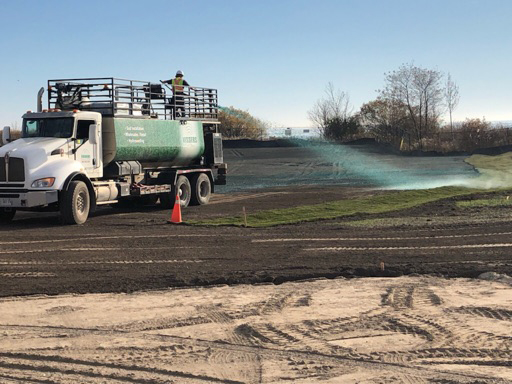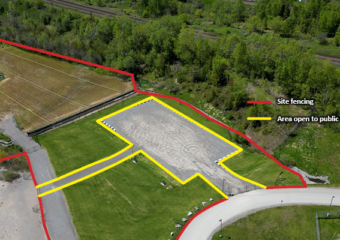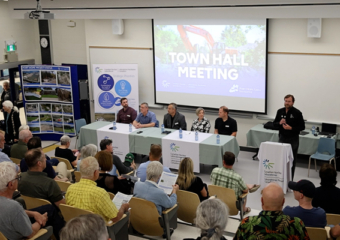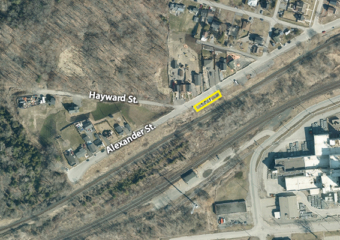Approximately 37,000 tonnes of contaminated soil from the former waterworks site in Port Hope has been completely excavated and transported to long-term storage. The area bordering the commonly referred to West Beach is being cleaned up as part of the Port Hope Area Initiative (PHAI).
Activities at the Port Hope waterfront have significantly ramped up since March 2020, when PHAI project activities were suspended other than work to ensure site safety and environmental protection due to the pandemic. Following the restart of PHAI work, historic waste has been completely removed from the site and the area restored. Hydro seeding was finalized in recent weeks and grass has been sprouting in certain areas on the 22,500 square metres parcel of land. The remaining tree planting and asphalt paving will be completed in spring 2021. The contractors have already relocated the portable water treatment plant and trailers to the next site slated for cleanup in that area – 95 Mill Street.
After the completion of preparatory work, such as tree removal and clearing and grubbing earlier this year, excavation is now underway at the Mill Street site. With additional testing being planned for the site under the viaducts, work at the three sites that form part of the waterfront work is in full swing. The remainder of the West Beach area including the playground and beach front will be addressed in the next few years.
The soil at the Waterworks East site represented the bulk of the historic low-level radioactive waste that was stored at that location during the 1930s to 50s, a result of past radium and uranium refining practices of Eldorado Nuclear Limited, a former federal Crown corporation. The process required one tonne of ore and ten tonnes of chemicals to form one gram of radium and left behind soil contaminated with arsenic, uranium and radium -226. With little storage space at their harbour front site, Eldorado looked for other spots around town to store what they thought was just dirt. The beach area to the west of the site was targeted for fill to be placed there, which many thought was a good practice for the marshy terrain.
With the water table very high in the area, excavation has to be carefully planned and executed. Water management techniques are key for a successful excavation in the high flood plain area, and work must proceed in a methodical, controlled way so as not to exceed the treatment capacity of the portable water treatment system. Ground water control methods such as sheet piling was used at the waterworks site and was planned for the Mill Street site. However, with the spring start pushed to later in the year as a result of the pandemic and a relatively dry year, that sheet piling is not anticipated for Mill Street. With work now underway, the excavation is on track to be completed in 2021.
Though a separate work package, activities at the Port Hope Harbour and Centre Pier have also been ongoing with CNL transitioning care of the site to a new contractor. A limited dredging campaign is expected to resume in late fall to enable operational commissioning of the portable water treatment system, and preparatory activities to support that are being completed. These include de-fishing of the inner harbour to ensure the fish habitat is safely protected. The treatment plant will support the requirement to collect and treat contaminated water on site through winter, and will allow for a quick start up to full dredging operations in the spring.
CNL remains committed to completing the cleanup activities safely, in compliance with regulatory requirements and in an environmentally responsible manner. We continue to look for efficiencies to shorten the project timeline where possible and all other PHAI work, at residential and larger sites, is continuing to ramp up in phases according to the pandemic-related directives and guidance of government and public health authorities.




